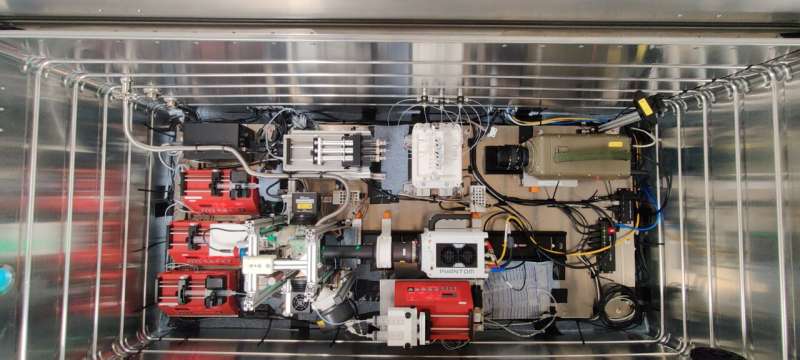Monitoring how drops behave in a weightless environment could lead to a better understanding of this phenomenon.
The Dropcoal system is a hardware device built by Romanian InSpace Engineering, on behalf of ESA. It is designed to facilitate such experiments in zero gravity. To ensure it can hold up in space, the construction and reliable functioning of the device needed to be examined first. Scientists from Romania, Germany, and the U.S. developed an experiment to test the device during ESA's 79th Parabolic Flight in October 2022.
The Dropcoal device was not alone on that flight. A German aerospace center DLR experiment was also loaded on to the Airbus 310 Zero Gravity aircraft, focusing on how two droplets approach, as well as the first moments when they merge.
Within the aircraft's experimental rack, both the ESA and DLR experiments operated independently. The core components of ESA's experimental setup were three syringes attached to a syringe driver. This allowed to create spherical droplets on the tip of eight needles.
Next stop: International Space Station
Following the results from the parabolic flight, Dropcoal experiments are set to run on the Space Station as part of an ESA mission in 2024. This will allow for the long-term investigation of droplet formation in zero gravity.
Europe's Columbus module will host the experiments in the ICE Cubes facility. There, drops will collide head on. To monitor how the drops interact and merge, an optical instrument equipped with a high-speed camera will capture frame-by-frame images.
All Dropcoal experiments on the Space Station will be controlled from Earth, bringing the wonders of droplet dynamics within our grasp.
Provided by European Space Agency



